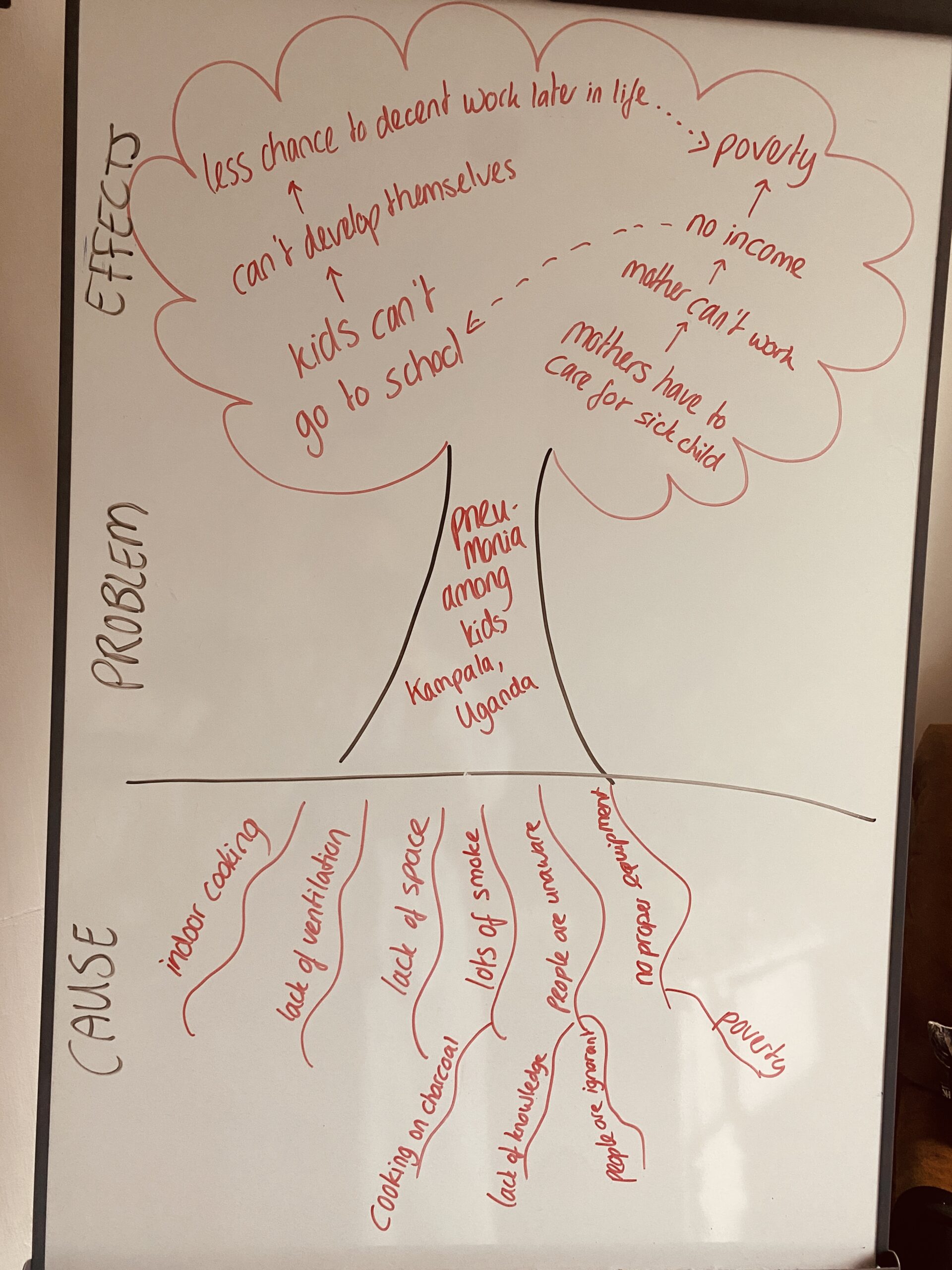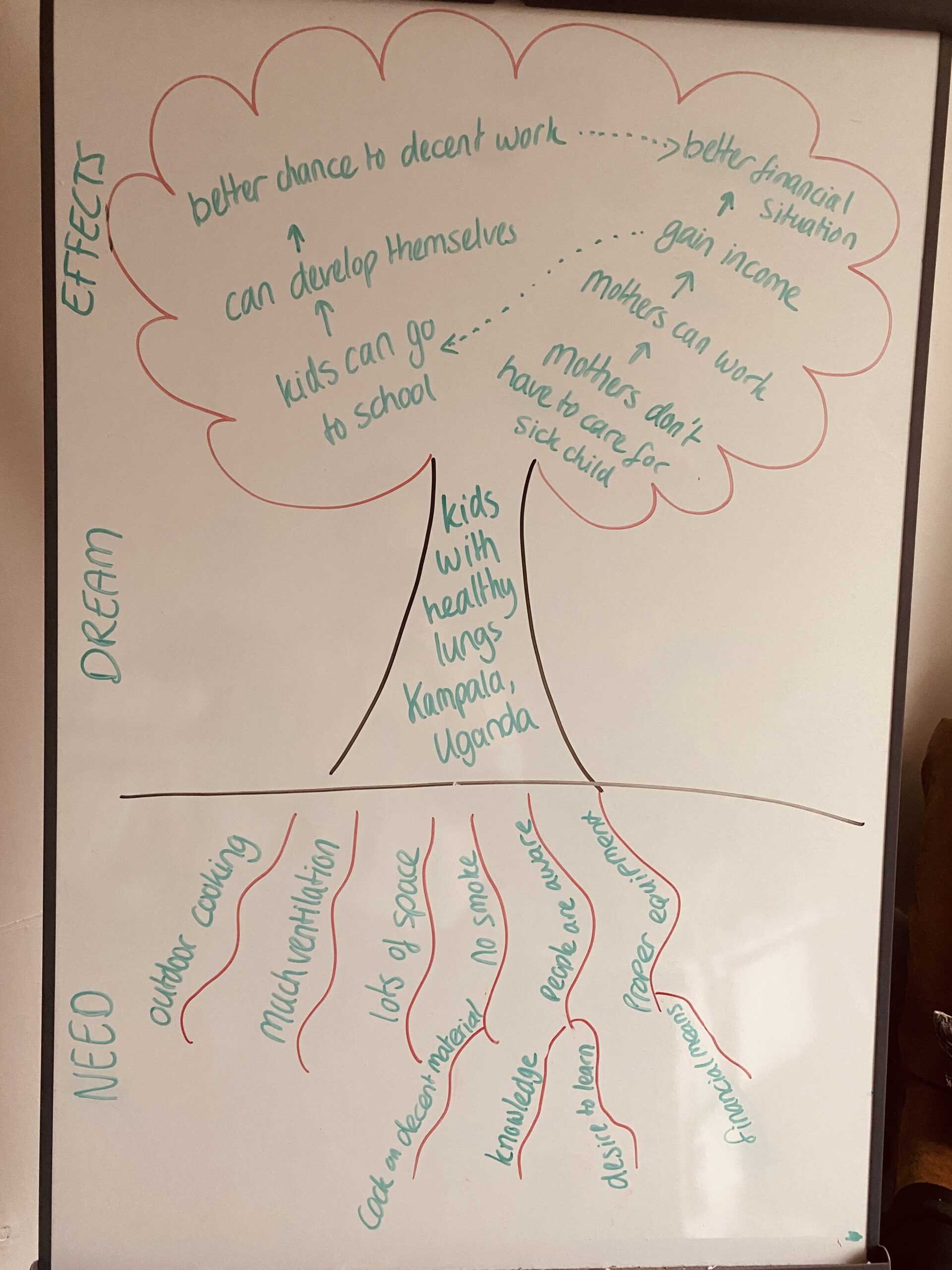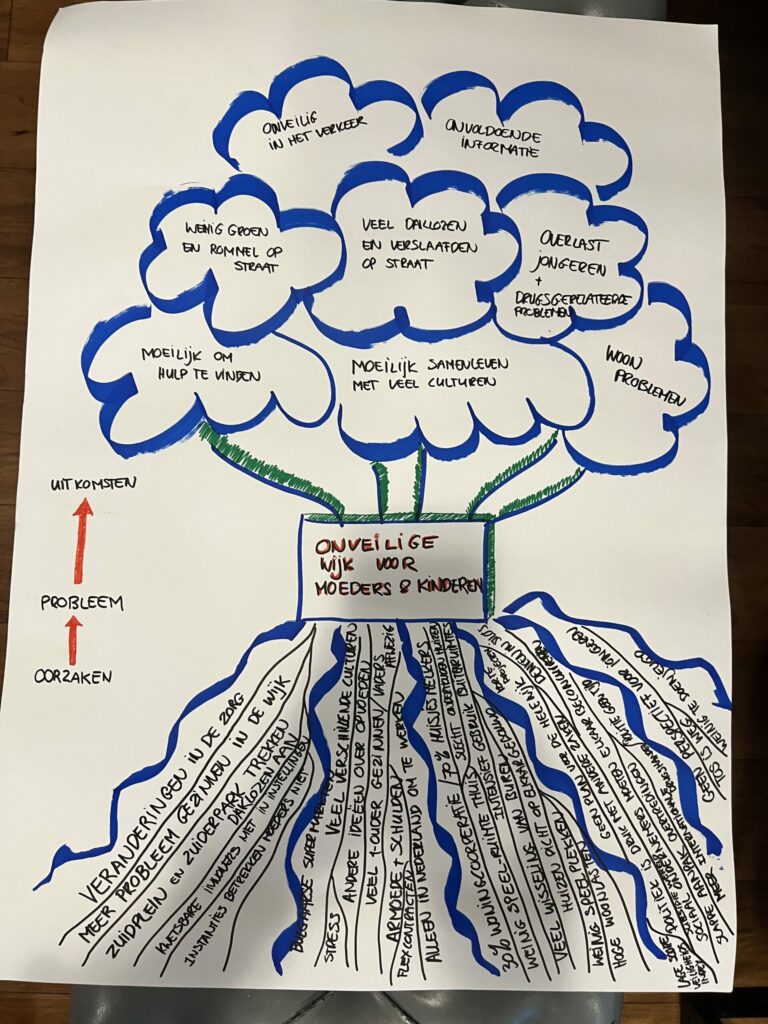A problem tree is a metaphorical representation of cause-and-effect relationships. The trunk of the tree represents the problem, the roots of the tree represent the causes of that problem, and the branches and leaves represent its effects or consequences. Such a problem tree can be created by the PAR pracitioner, based on the results from the System Exploration or the PAR practitioner can invite participants to create their own problem tree during a focus group session. Representing the problem in this way makes participants aware of how one thing leads to another and invites them to tackle the problem ‘at its roots’.
The image below depicts a fictional problem tree, inspired by the Healthy Cooking Challenge, about childhood lung disease caused by indoor cooking in the slums of Kampala, Uganda.

“I thoroughly enjoyed participating in the three-day training with Madelon. I was especially surprised by how consistently she translates her vision of involving the target group and end users throughout the entire action research process.
My project has greatly benefited from the 7 stages. Many valuable and practical working methods were covered, which I still frequently refer back to, such as the so-called problem and action trees.”– Former participant Ina
Flipping the problem tree into a dream tree
Once the problem tree has been created, discussed and possibly completed, the problem tree can be ‘flipped’ into a dream tree. In the dream tree, the trunk represents ‘the dream’, the roots represent the necessities to achieve the dream, and the leaves represent the effects of that dream. The PAR practitioner can thus facilitate the participants in discovering together the needs and necessities to achieve the dream situation, as an intermediate step to devising solutions to get (as close as possible) to the dream.
The image below represents depicts a fictional dream tree, as ‘flipped’ from the problem tree above. As you can see, all items in the tree have been flipped into the positive opposite.


